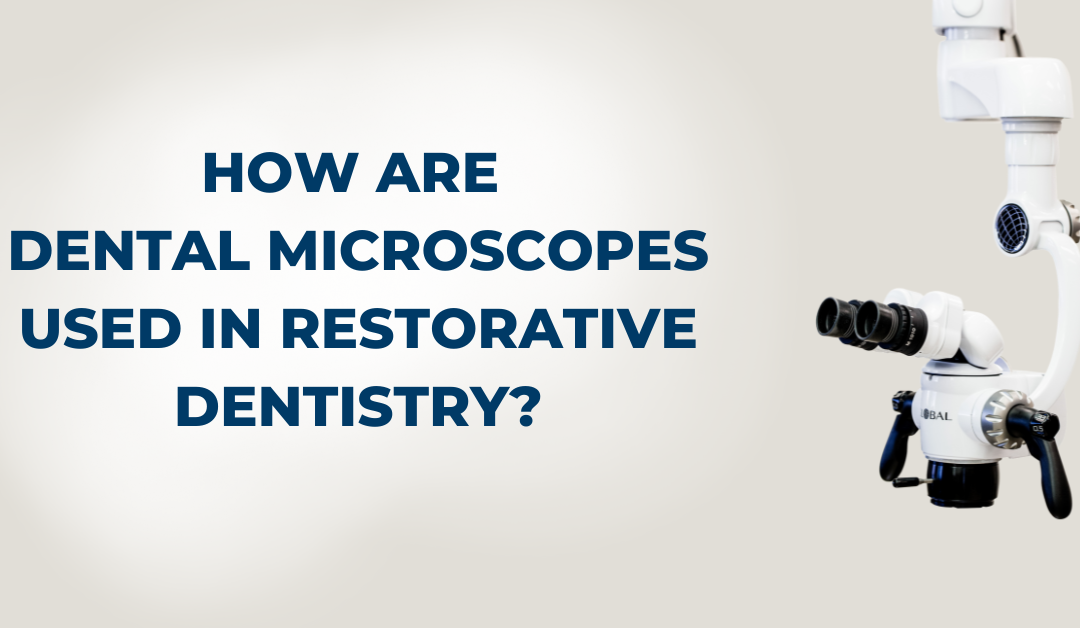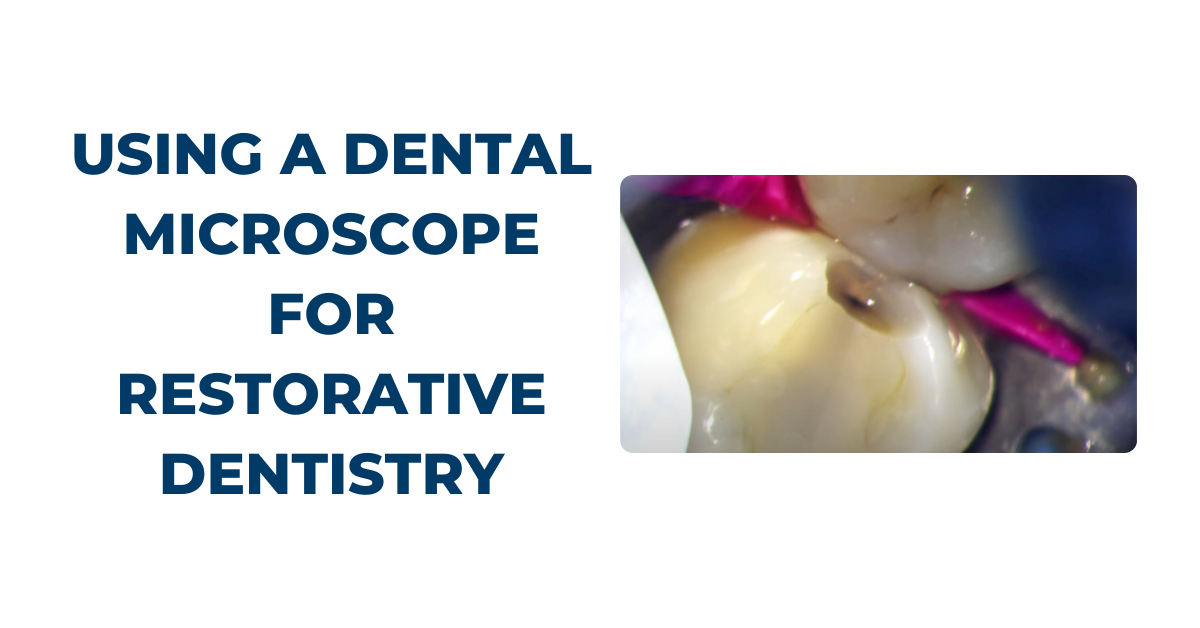3 Dental Microscope Cleaning & Disinfecting Tips
.png)
Today, dental professionals across the world are more concerned than ever about keeping their equipment clean and sanitized. This is especially top of mind between patient exams, but also necessary between work days for routine sanitization of clinical contact surfaces and other components to reduce health risks.
As a dental microscope manufacturer, we often get questions from doctors about how to properly clean and disinfect their microscope and its components. It’s crucial to get this right – it can affect the health and safety of your staff and patients and, additionally, using unapproved cleaning products or techniques can affect the performance of your scope.
Here are our top tips to keep your patients and staff safe by practicing recommended disinfection protocols.
Tip #1: Use an Asepsis Barrier Bag & Replace Regularly

We recommend the use of a protective aspesis barrier bag on the microscope to prevent cross-contamination. Studies show a microscope barrier bag can prevent contamination of clinical contact surfaces, and is particularly effective for those areas of the scope that are difficult to clean.
Because the bag will become contaminated, it should be removed and discarded after each patient following your facilities biohazard procedures. Here are a few guidelines for properly using a barrier bag with your scope:
- While still gloved, remove the lens protector (also referred to as the lens cover) and rubber eye guards (also referred to as eyecups). Clean and disinfect these components.
- Next, remove and discard the barrier bag while closely examining the microscope surfaces for contamination. Surfaces need to be cleaned and disinfected only if contamination is evident.
- After removing your gloves and performing hand hygiene, a clean barrier bag, lens protector, and eye guards should be placed on the microscope to prepare for the next patient.
We recommend maintaining spare lens covers and eyecups, as well as maintaining a stock of barrier bags to keep in your inventory to replace as needed.
With the exception of its optical surfaces, all other surfaces of the microscope can be safely cleaned and disinfected by using any product included in the list in the table below. All cleaning products in this list are contained in the EPA List N and have been tested on the various surfaces of the Global A-Series microscope, excluding the optical surfaces.
Cleaning and Disinfecting products derived from EPA List N

Tip #2: Clean the Objective Lenses & Optical Surfaces between Exams
So, if the barrier bag covers all but the optical surfaces of your scope, how do you clean these components?
First, it’s important to know which components need to be cleaned and disinfected after each patient. On a Global microscope, and most others, these include: the eyepieces, rubber eye-guards, the rubber grommet and lens protector.
To speed turn-around between patients, you may want to have more than one pair of eyecups, rubber grommets and lens protectors on hand. One set of these components can be in use while the other is being thoroughly disinfected.
Optical Surface Cleaning Instructions
Clean the optical surfaces in between each patient. f a lens surface is found to be contaminated, even during an exam, you’ll need clean it immediately.
While wearing a face mask, use a clean and dry, soft bristled brush to remove all excess dust and abrasive particle residue before contact-cleaning any lens surface.
Next, all exposed optical surfaces can be cleaned and disinfected using a clean microfiber cloth or lens tissue lightly moistened with 70% isopropyl alcohol. Never contact-clean a lens without first moistening the cloth or tissue with alcohol.
The cloth you use should have only enough alcohol to moisten the surface of the lens, you will want to avoid incursion of alcohol and contaminants around the periphery of the lens to protect these components. If necessary, clean the edges of the lens with a low-lint cotton-tipped swab, lightly moistened with isopropyl alcohol.
When cleaning a lens surface, begin in the middle, and use an outward spiraling motion to sweep contaminants toward the edge of the lens.
Lastly, it’s important to acknowledge that touching a lens surface in order to clean and disinfect it will inevitably cause small, but cumulative amounts of damage to the lens and its coatings. Use only enough time, action, and pressure to thoroughly clean the lens.
Tip #3: End of Day Routine
After each work day that you or your staff have used your scope, we recommend taking a final look after your last disinfection. While this process is required between patient exams or if surfaces have been contaminated since their last cleaning, it’s also a good idea to inspect your scope at the end of each day.
Use this end of day routine to confirm:
- All necessary components have been thoroughly cleaned and ready for patients scheduled for the next day.
- Barrier bags are in stock and are properly shielding the non-optical surfaces of the scope.
- Optical components are properly disinfected before being secured (or stored, if using a second set).
- All staff and assistants using the microscope the next day are educated and trained on proper cleaning and disinfection protocols.
For more on this topic, to ensure you can maximize the life of your scope while maintaining proper disinfection protocols, check out our article: Dental Microscope Preventative Maintenance Tips.
Questions? Reach Out!
We’ve been in the dental microscope business for over 25 years. We’ve worked with doctors across the globe to help them get the most out of their investment. With our experience, we’ve studied the latest and most effective cleaning protocols to help our customers conduct safe and healthy practices. If you need more information about cleaning or preventative maintenance, please reach out to our team by clicking the button below.
Ready to get started with a scope? If you’re considering adding a scope to your practice, know your investment is a good one, protected for the long-term with quality manufacturing and the industry’s only limited lifetime warranty (US & Canada only). We’re proud to be based in the US, with manufacturing and assembly facilities in St. Louis, MO. This helps us give our customers the best service, domestically and internationally. And, as part of our commitment to our customers, we offer a limited lifetime warranty on our scopes (US & Canada customers only).
Please feel free to reach out at 800-861-3585 or by clicking the button below.



